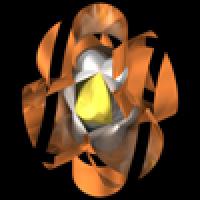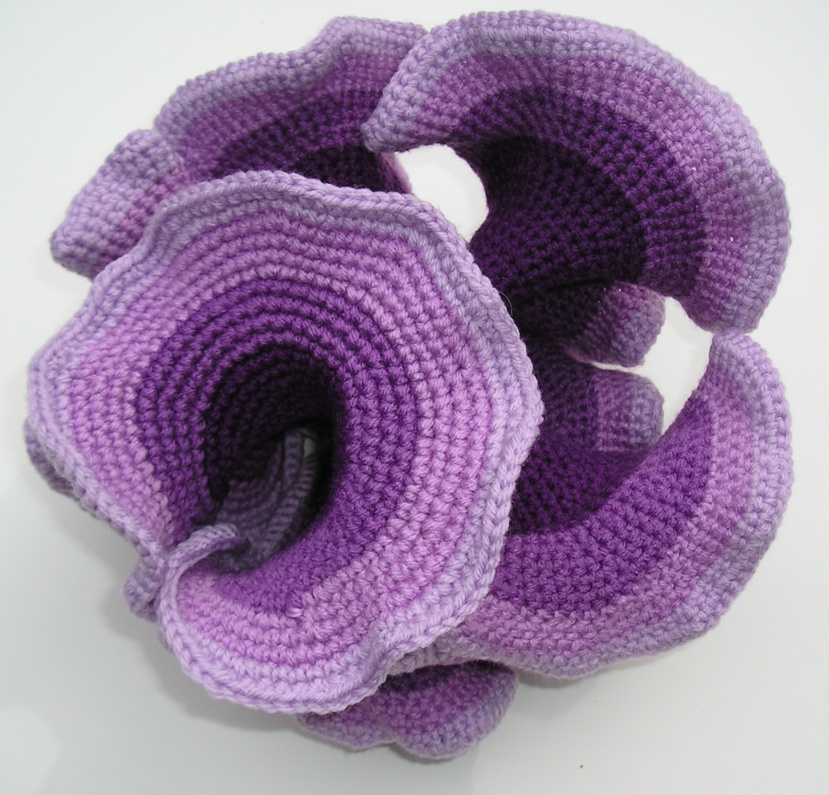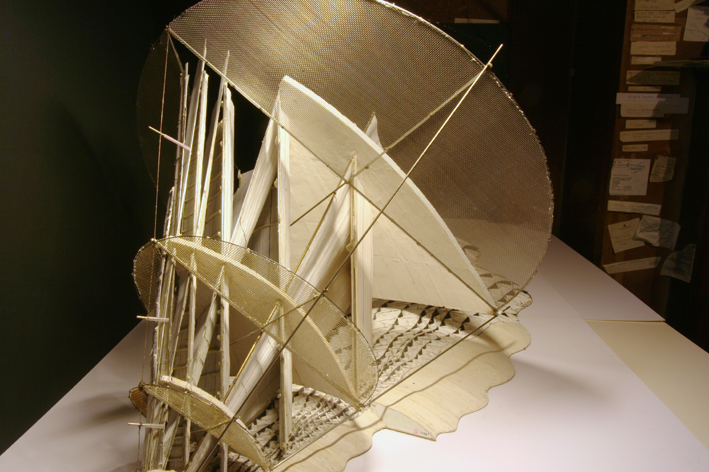
Beyond Measure

Crocheted hyperbolic surface by mathematician Daina Taimina.
Beyond Measure: Conversations across art and science is a new exhibition at Kettle's Yard, Cambridge, that explores how geometry is used by artists, astronomers, engineers, surgeons, architects, physicists and mathematicians — among many others — as a means to explain, understand and order the world around us.
Built around a series of workshops, talks and discussions, Beyond Measure will offer many different ways of engaging with geometry, and many different views of the world we live in. The exhibition draws parallels between the artist's studio, the laboratory and the study as equivalent places for thinking, imagining and creating.
Over sixty contributors will have work on display in the exhibition. They include a new sculpture by John Pickering and the Smart Modelling Group at Foster + Partners, work by Turner prize winners Keith Tyson and Richard Deacon, virus-structure models produced by the Nobel winning biophysicist Professor Sir Aaron Klug, Professor Sir Roger Penrose's geometrical explorations of the mathematical foundations of the physical universe (as featured in Plus) and Tom Dixon's pylon chair.
Beyond Measure is organised by Barry Phipps, Kettle's Yard's first Interdisciplinary Fellow. Explaining the aims of the exhibition, he said: "As the theme of the show suggests, geometry, which began as a tool used to measure the Earth, has since become fundamental to generating and mapping new terrains of science. It is also a question for artists about our engagement with a calculated world.
"What I do as exhibition organiser is open possibilities. It's not for me to define answers, and I want to do more than just raise questions, as exhibitions tend to do these days. I want to allow people to see the work, engage with it as an object, and then hopefully be able to work deeper into the understandings of what that model, or Klein bottle, or drawing is trying to do. I think I've got some really interesting people who are very articulate and thoughtful and able to communicate some of that much more difficult stuff to the lay person."

Artwork by John Pickering.
Also on display will be paintings by Iranian born painter Nader Ahriman, British artist Peter Peri and Anglo-American artist Sarah Morris, an installation by German sound artist Carsten Nicolai and the American minimalist Robert Morris, as well as works on paper by artists as diverse as British icon Richard Hamilton, the late Cuban-American Félix González-Torres, and Japanese artist Tatsuo Miyajima.
Alongside the artists work will be objects that have not been previously been seen by the general public. These include the first working model of a hyperbolic surface crocheted by mathematician Daina Taimina (as pictured above), and the dividers used by Sir Christopher Wren when designing St Paul's Cathedral.
The exhibition runs from 5th April to 1st June and there will be a range of related talks and workshops, listed below. The exhibition is free to the general public. As Phipps said, "It's absolutely free! I've done all the hard work, all you have to do is turn up and enjoy it!"
Our full interview with Phipps will feature in Issue 47 of Plus.
Events throughout the duration of the exhibition include:
Gallery Talks — Saturdays, 2pm, admission free:
- 12 April — Dr Daina Taimina, mathematician (Cornell University);
- 19 April — Dr Frank King, Computer Lab, Cambridge University;
- 19 April — A 90 minute walking tour of sundials around Cambridge;
- 26 April — Robin Catchpole, astronomer;
- 3 May — Miguel de Beistegui, Philosopher;
- 10 May — Alan Bennett, glass blower, scientific instrument designer/maker;
- 17 May — Eric Parry, architect;
- 24 May — Mr Tariq Ahmad, consultant plastic surgeon, Addenbrooke's Hospital;
- 31 May — Conrad Shawcross, artist.
Interdisciplinary Workshops — 1pm-3pm. £10 per session or £25 for all three:
Each of these experimental sessions brings together an artist and a scientist. They will spend the morning analysing the show before hosting a stimulating afternoon workshop that will include both discussion and practical engagement.
- Wed 16 Apr: Artist Claude Heath and astronomer Carolin Crawford;
- Thurs 24 Apr: Engineer Allan McRobie and artist;
- Thurs 22 May: Artist Claire Witcomb and chemist Tennie Videler.
Studios onsite — Mondays 5 May and 26 May, 11.30am-1.30pm, 2.30pm-5pm:
Research engineer Pandia Raj Ramar (5th) and artist May Cornet (26th) will each convert Kettle's Yard's Education Room into a studio space. See them at work, chat about their practice and have a go making your own artwork. Open to all ages, drop-in, no need to book, materials provided.
Evening Talk — Wednesday 23 April, 6.30pm:
In the Garden — A talk by Richard Deacon. Tickets £5 (£3 concession).